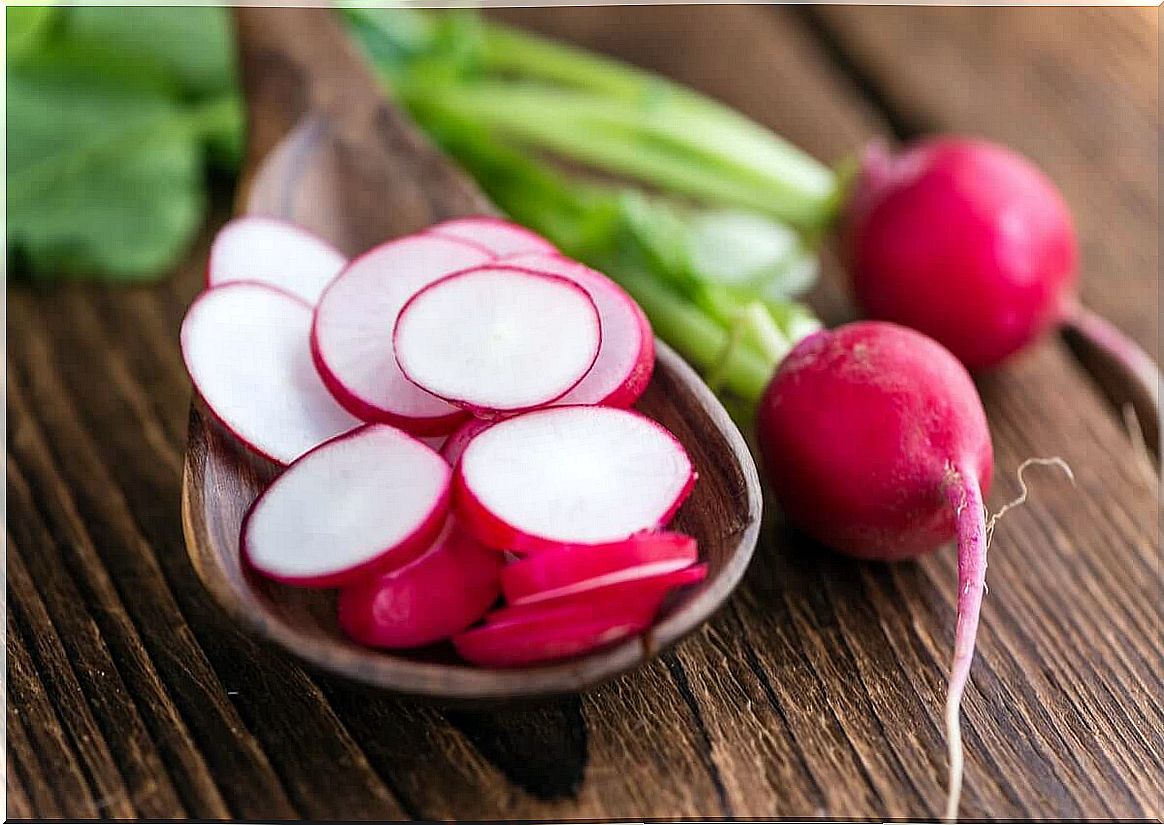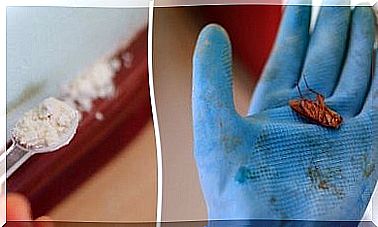Radish Leaves: Benefits And Uses
The next time you buy radishes, don’t throw away their leaves. Aside from being cooked like any other leafy green vegetable, they can offer certain health benefits. You can find out more about it here.

Radish leaves are not exactly the most popular food in the kitchen. However, if you knew about all of their benefits, you would surely include them in your diet. Thanks to their mild taste, they can also be combined with any salad or dish.
The first thing to do when preparing this plant is usually to cut off its leaves. However, they contain food components that can have a positive impact on health. If that hasn’t convinced you to try them, we’ll tell you about their properties and how to prepare them here.
What are the benefits of radish leaves?
Unfortunately, there are not yet many studies on their properties. Radishes have long been popularly used as an aid in the treatment of certain mild illnesses such as fever, sore throat, biliary problems and inflammation. You can learn more about their benefits below.

They help supplement your diet
Because of their low calorie content, radish leaves can be included in any diet plan to maximize their benefits. You can even mix them with kale or other leafy green vegetables to eat as a salad, with no remorse at all.
In that regard, an Illinois University Extension article describing the nutritional components of a wide variety of vegetables states that half a cup of radishes has approximately 12 calories and virtually no fat.
They promote digestive tract health
Radish leaves can make digestion easier. While scientific evidence of its effects is pending, some studies done on animals suggest that their fiber content may be responsible for these benefits.
In fact, a study published in the Food and Agricultural Organization of The United States states that consuming this part of the plant can improve gastrointestinal function and lipid metabolism.
They may have beneficial effects on diabetes
Diabetes is a disease in which blood sugar levels are above normal. This disease is widespread in the world population and is caused by low levels of insulin production by the pancreas or by tissue resistance to this production.
According to a technical article published in the journal Nutrients , all parts of the radish appear to have anti-diabetic properties. Their leaves are said to be able to decrease the amount of glucose in the intestines. However, more clinical studies are needed on these effects.
How can you prepare radish leaves so that their benefits unfold?
The most common way to eat radishes is raw, sliced. However, radish leaves can be used in various dishes and cooked like any green leafy vegetable. Here are some of their possible preparations:
- Salads: Just like lettuce or spinach, radish leaves can be added to any salad.
- Soups: You can use them as soup vegetables along with other vegetables and cook them.
- Milkshakes: When making these drinks, you can add a few radish leaves. They increase the nutritional value of the milkshake without affecting the taste.
- Omelettes: This dish is easy to prepare and has a very pleasant taste. Its preparation is the same as a spinach omelette, except that you use radish leaves instead of spinach.
- Seared: You can also stir-fry them together with other vegetables in the wok. All you need is salt and the spices you want to use.

Contraindications and unwanted effects
Eating radish leaves is almost always considered safe. However, in large quantities it can irritate the stomach. Also, some people may be allergic to this food, although this is not all that common.
On the other hand, women who are pregnant or breastfeeding should be extra careful when consuming radish leaves as there is currently insufficient information on their effects in these circumstances.
Since radish leaves help lower blood sugar levels, people with hypoglycemia should also refrain from overeating them. If you have gallstones, you should be careful when consuming radish leaves.
This is because this food increases the flow of bile and this can cause sudden pain due to the blockage of the biliary tract by the stones.
Finally, don’t forget that using this plant in moderate amounts will not have any adverse effects, so you can easily add it to your diet and try out its benefits. If you experience any symptoms, it is best to see a doctor.









